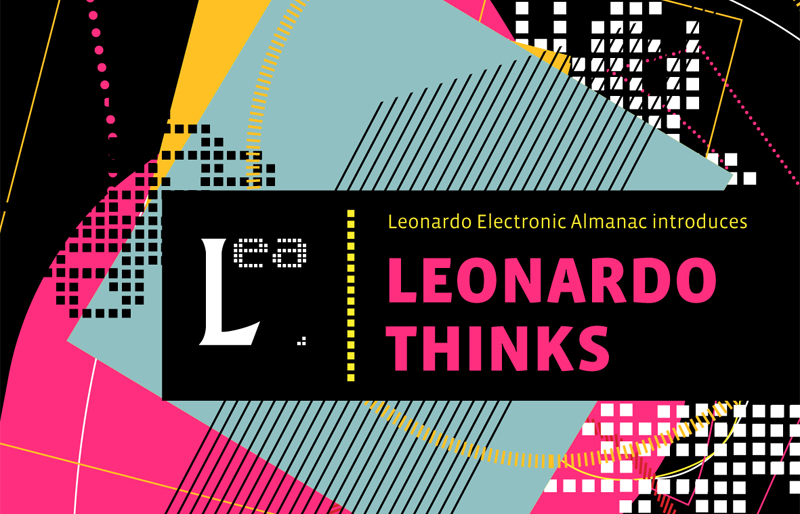
LEONARDO THINKS 1968 – 2011
Historical Opinion by Aleksandra Manczak
Aleksandra Mańczak concludes that the unity of Leonardo da Vinci’s artistic and scientific ideas has retained its validity and is richer today.
Leonardo’s Unity of Artistic and Scientific Ideas
If it is true that to observe and analyze nature makes one wise- and human history gives an affirmative answer-thenwe should remember that Leonardo da Vinci “had devoted his whole life to learning about the infinite complexity of all aspects of nature and that he was able to elevate this insatiable ‘cognitive passion’ to art.” [1]
Several centuries passed before we believed in what da Vinci encouraged: “searching for beauty and harmony in unusual pictures such as for example those suggested to the imagination by a wall covered with spots.” [2] But I am amazed by some other facts in da Vinci’s biography-facts that seem to be insignificant but that tell a lot about him as a man.
It is said that Leonardo never participated in cruel corridas, the then-common practice of bear fights and hunts. “He was seen buying birds at a market in order to set them free.” [3] Symptomatic also are his own words about his work on sub- marines: “I don’t make it known and I don’t develop it because of the evil nature of people, who would commit murder on the sea bottom by piercing sides of ships and sinking them together with the people on board.” [4]
After the experiences of so many wars since Leonardo’s time, including the two world wars, we can ask the following questions: (1) Why has humankind never hesitated to try out its powers of murder and destruction? (2) Will it be now strong enough and wise enough to give up such trials immediately because thanks to tele- communications-andthus also, to a certain extent, thanks to the new media of art-now isanextraordinarytimeforallnationstolearnmoreaboutone another, understand one another, communicate to one another their new impressions and, finally, save our ‘global village’?
Some people see a moral crisis in the decline of authorities, of religion and of tradition. A formula for improvement of the situation is seen in the courage and the ability to exceed one’s limitations. Whatever the evaluation of the past, the pre- sent chance seems incomparable. Mankind has gone a long way in order to attain the present state of knowledge and sciences: With the growth of the technical potential and precision of theory, the probability of making a mistake in interpre- tation and in practice is diminishing. Consequently, various specialisations are separated. However, detailed but fragmentary knowledge does not render the full, i.e. the true, picture of any problem or phenomenon.At present, thanks to the cooperation of experts in various fields, we are approaching the final truth, the most appropriate understanding of the surrounding world.
Somehow the unity of Leonardo da Vinci’s artistic and scientific ideas has re- tained its validity, only a few intermediate shades richer. I wish the time would come when no one would think about bringing birds to market.
Endnotes
[1] Maria Luisa Rizzatti, “LeonardodaVinci” in Geniuszesztuki Leonardo da Vinci (Warsaw:Krajowa AgencjaWydawnicza, 1989), 84. Translations of all quotations in text by Adam Sumera.
[2] Rizzatti [1] pp. 85-86.
[3] Heinrich W6olfflin, SztukaklasycznaJ,. Muckowski,tr. (Krakow,1931) pp. 20-23. Originally published in German as Die klassischeKunst.Translated into English by Adam Sumera.
[4] Rizzatti [1] p. 108.
Aleksandra Mańczak, an artist, teaches at Strzeminski Academy of Fine Arts and Design in Lodz. Her web page is http://www.manczak.com.pl/.
ISSN No: 1071-4391
Author: Aleksandra Manczak (translated from the original Polish by Adam Sumera), Leonardo EditorialAdvisor, E-mail: aleksandra_manczak@toya.net.pl
Strzeminski Academy of Fine Arts and Design in Lodz.
Originally published in: Leonardo Vol. 24, No. 1 (1991), pp. 1-2
Print: ISSN 0024-094X, Online : ISSN 1530-9282, DOI: http://www.jstor.org/stable/1575459
Leonardo is a registered trademark of the ISAST.
